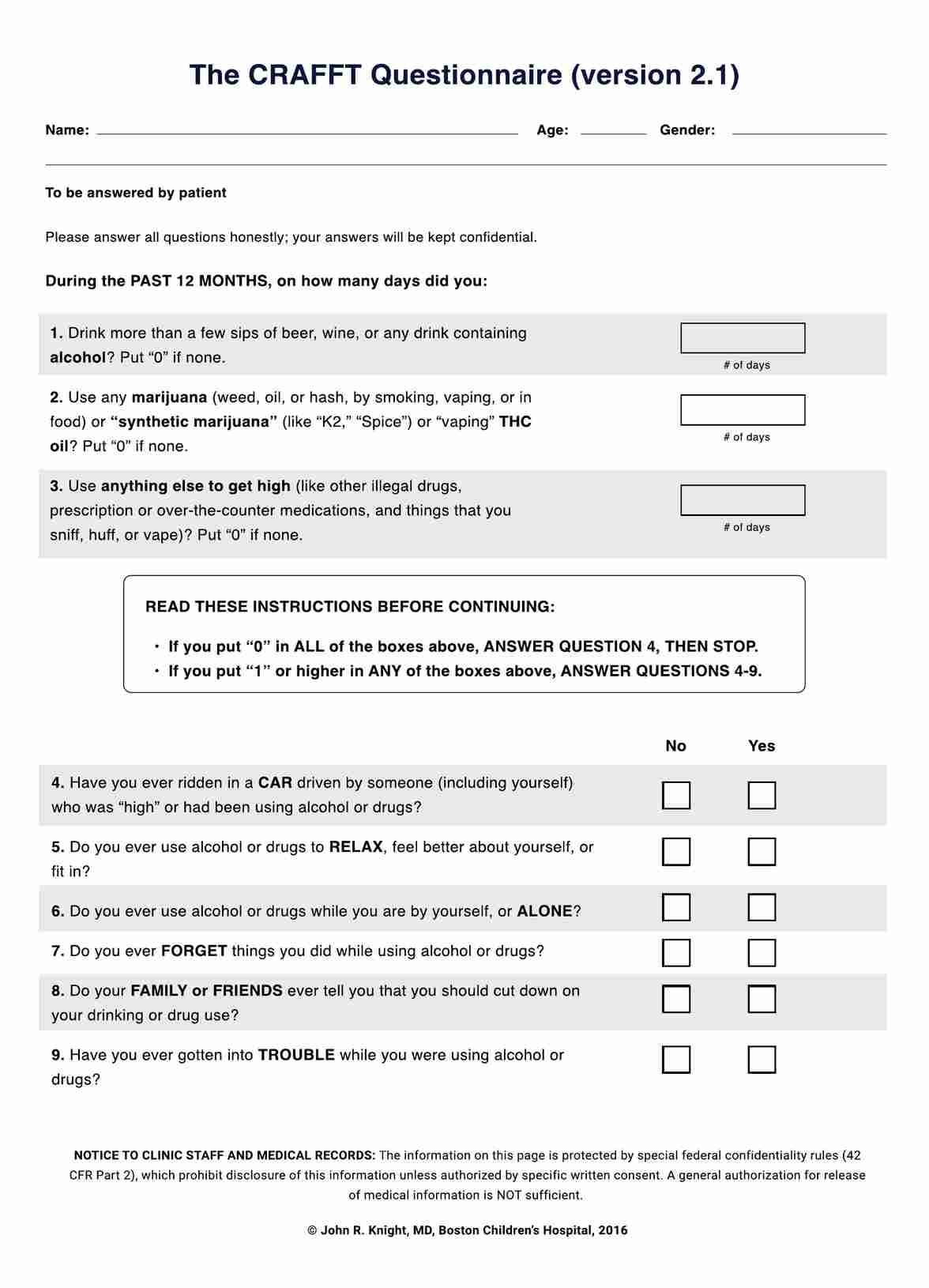The CRAFFT questionnaire is designed for adolescents aged 12 to 18 years. It's a valuable tool for screening this population's substance use and related risks.

CRAFFT Questionnaires
Discover the utility of the CRAFFT Questionnaire for adolescent substance use screening. Get your free PDF and learn how Carepatron can simplify the process.
Use Template
CRAFFT Questionnaires Template
Commonly asked questions
This largely depends on the individual patient and their circumstances. However, regular administration is beneficial for tracking changes in substance use over time.
Yes, Carepatron is designed to be user-friendly for anyone involved in mental health care. This includes caregivers, family members, and patients themselves.
EHR and practice management software
Get started for free
*No credit card required
Free
$0/usd
Unlimited clients
Telehealth
1GB of storage
Client portal text
Automated billing and online payments











